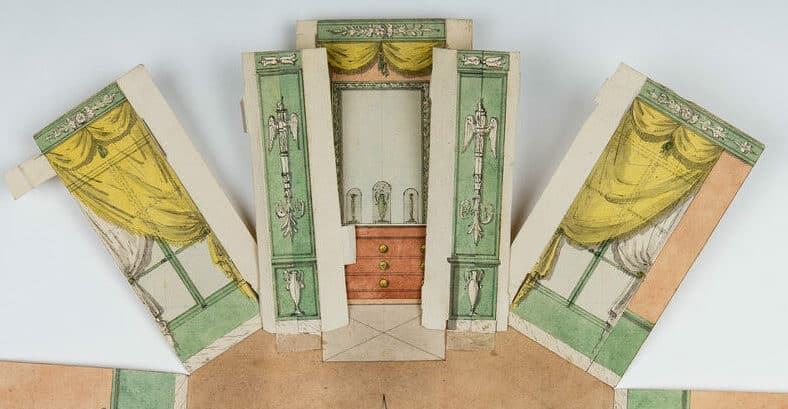Fontaine: Model for a Music Room

A fresh alternative to the intellectual and formal mannerisms associated with architectural drawings in the West since the age of Leon Battista Alberti, Pierre-François-Léonard Fontaine’s drawing explores a simple, direct way of communicating a spatial proposition. To access his vision we don’t need to be familiar with the conventions of technical drawings. We don’t need to know how to read a plan or a section. We don’t need to be initiated. This is a type of drawing that can be understood and appreciated by everyone.
And yet, this drawing offers a certain air of mystery, especially if we compare it to modern-day renderings. There is a charming fascination in the suggestion that a room or a building may be regarded as a mere consequence of folding a piece of paper with a certain degree of care and zeal. Nothing could be further removed from the operations and machinery behind a computer drawing: so complicated in its means of construction and still, most of the time, so banal in the way it presents itself to us.

The quality I like most is that it’s teasing. We want to fold it when it’s flat; we want to flatten it when it’s folded. What is its actual form? That is impossible to tell. That such a simple construct can embed such intricacy, magic and clarity is invigorating. It encourages us to hope architecture itself may be, again, instilled with simplicity and charisma, if only we find the means and courage to evade its unnecessary complications, formalities and banality.

– Iris Moon